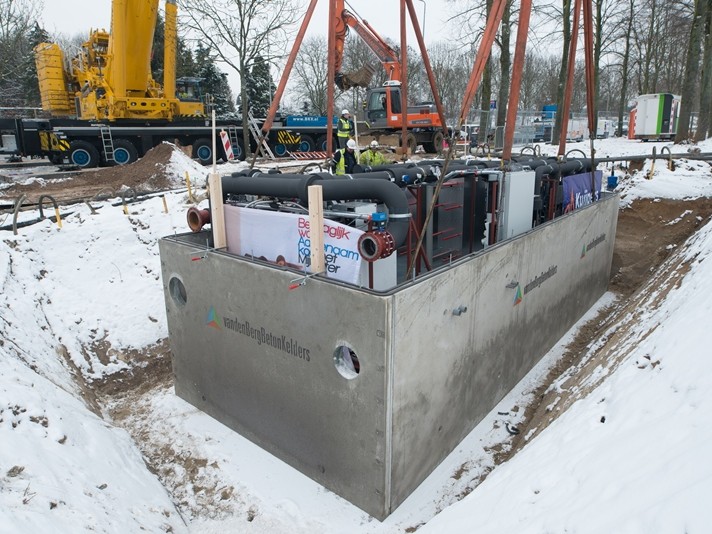Putting waste heat to work
The average mid-sized supermarket in Europe produces enough waste heat from its refrigeration and air conditioning units in one year to be able to provide the thermal energy needs of 200 homes over the same period. It’s not just our supermarkets producing this kind of waste – there are data centres, factories, hospitals, offices and many other buildings and institutions in towns and cities all over Europe producing this energy as a by-product of their activities, all too often just wasted into the atmosphere. This wasted thermal energy is often referred to as a “pseudo renewable energy source” but, despite its potential value there are currently few ways to use it. As it is most often available at low temperatures – around 10 to 30ºC – using it to directly warm water to use in the home or warm water to use in district heating systems is simply not possible: shower water, for example, is typically used at around 40ºC. Meanwhile conventional district heating networks supply water at around 80-90ºC, so again, the waste thermal energy cannot be used to warm water directly to be useful around these networks. As well as this being a waste of a potentially valuable energy source, this wasted heat also produces what is known as a “heat island effect”, which raises the temperature of towns and cities to a few degrees higher than those in the countryside. Put simply, heat lost into the built environment just heats our cities and is not easily used for anything else. Moreover, warmer cities use more energy for cooling - and so the vicious circle continues. Life4HeatRecovery is an EU LIFE program-funded project seeking to change this, by using wasted energy recovered from different sources and applying it to district heating systems. The central idea of the project is to recover waste energy to create a “circular economy of heat”. Heat is, therefore, collected from where it is produced (the supermarket or factory, for example), recovered into a district heating network and then redistributed into buildings. These could be the same buildings that provided the waste heat in the first place or it could be other buildings on the district heating network around the same town or city. To do this efficiently, the project is developing complete, pre-fabricated skids that can be installed where the waste heat is produced, which both collect the waste energy using heat pumps in a similar way to how they are also used in a typical geothermal system. Roberto Fedrizzi, of EURAC Research, who coordinates the Life4HeatRecovery project explains how this works: “The heat pumps are used in two ways. The low-temperature waste heat can be warmed to a level that is useful for district heating. This is done by connecting a heat pump to this waste source which increases the temperature of the available heat from around 10-30ºC to something useful, like 70-80ºC. This is then connected to the district heating system and the heat is made available for traditional district heating networks. “The other possibility, however, is for a new generation of district heating networks. These directly distribute the waste heat through the network: this heats the water in the network to around 10-20ºC and this low-temperature water is distributed to the door of the buildings on the network. Of course, this low temperature water is not a useful supply of domestic hot water or heating, but it can be warmed up to a useful heat at the individual buildings using heat pumps. The value here is that the low-temperature water does not suffer heat losses along the network pipelines. “In either case,” he concludes, “with the waste heat being used at source, or being warmed up at the user end, the idea of the project is to use heat pumps between the user and the source of the waste heat.” This article was written for Projects Magazine. Find the full article at: http://www.projectsmagazine.eu.com/current_issue

